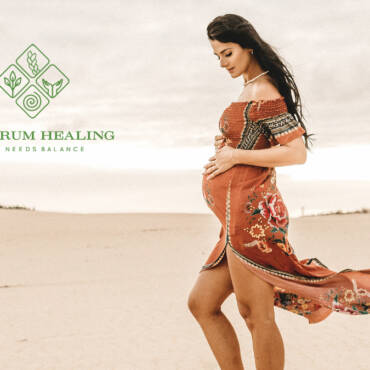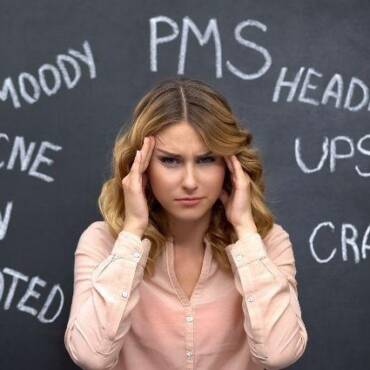Congratulations about having a baby, and making it through your pregnancy. Now that you have this wonderful person in your arms you can start to feel “back to normal” right? Well maybe now, because if you’re like 8 out of 10 women you will experience higher levels of pain than you expected during your postpartum year. It may have taken 9 months to have your body change and grow a baby, but that does not mean most women expect to give themselves equal if not more time to recover from pregnancy and birth related complications. When 6-8 weeks is the average time a maternity leave schedule allows, women are expected to perform tasks that their bodies are simply not ready to do sometimes. So what could keep a mother from recovering quickly and pain free? There are actually a lot of painful complications after birth, but luckily regular postpartum massage offers relief for a great deal of them.
Pre Existing Pain Conditions
Hyperthyroidism and Arthritis– Both of these conditions cause inflammation in joints, and with the amount of relaxin hormone decreasing by the day joints of the body are really feeling the squeeze. Hyperthyroidism is known to cause a weakening of muscles and inflammation around the pelvis and can cause sitting for periods of time painful. 1.5 million people in the USA have rheumatoid arthritis and women make up a larger percentage of this number than men. But rheumatoid arthritis is not the only arthritis that affects women. It may be hard to believe but 24 million women in the USA have osteoarthritis, the most common form of arthritis and the joints of the low back and hips are the most common area for women to report pain. Having a postpartum massage and being sidelying can really help alleviate pain in the lower back and pelvis due to arthritis and hyperthyroidism. Helping inflamed joints to lesson in pain and fluid is the main way that postpartum massage helps.
Old sports injuries, bursitis and migraines-Carrying a baby inside or outside of a body is a lot of work, and if the muscle and nerves are compromised due to past injury then it only adds to the chronic pain cycle that often develops in these areas of the body. Sometimes body mechanics and alignment change dramatically after birth, and postpartum massage can help with muscle compensation. Bursitis in the shoulders is common, and when trying to care for a newborn it can flare up really fast. Having the shoulder girdle worked on can feel amazing, and help to make side sleeping more comfortable. The hormones that can cause PMS headaches are in full effect during postpartum time. Even if a woman does not have a menstrual cycle for up to a year after delivering, her hormones can make her very uncomfortable with migraines. Relieving this common postpartum pain is accomplished by reducing tension within shoulder and neck muscles, along with the benefits that massage has on keeping hormone levels more balanced.
Carpal Tunnel syndrome-This is a common issue for women to face during their postpartum year. Sometimes it can get better with pregnancy and then return with force after the baby is born. Thanks for hormones, this is often the case, but the good news is that having some specific massage work done in the forearms and hands can help keep the burning and jabbing pain at bay.
Postpartum Specific Pain Conditions
Mastitis– This painful condition is a common issue for breastfeeding mothers and results from a bacterial infection within breast tissue. Age or number of previous babies does not seem to be a factor in developing this condition and it can be treated with antibiotics. A woman can be at greater risk for mastitis if she has had breast implants, breast reduction or nipple piercings. Having a postpartum massage can help to give relief to the mother by having her prolactin levels increase and help her relax enough to keep milk flowing without having to be stressful and painful. Mothers who have mastitis are often burdened not just because they struggle to breastfeed comfortably but also with keeping themselves comfortable wearing nursing bras or more tailored business clothes. Mastitis usually clears up within a week when treated with medications, but it is no fun until the swelling and pain in the breasts reduces.
Hemorrhoids-It might not be the subject of most conversations after birth, but it does not mean that hemorrhoids don’t occur within a large population of women recovering from birth. Hemorrhoids can be both internal or external and can flare up and can complicate a woman’s ability to comfortably sit and use the bathroom. A hemorrhoid is created when blood vessels in the rectum which, lay just under the skin level, become enlarged with blood and change in their shape and appearance. Symptoms vary, but pain associated with sitting, coughing, straining to eliminate the bowels, and rectal pain when changing body positions are the most common. The pain levels may also increase suddenly, and often take a few hours to decrease completely. So as mothers are changing diapers and keeping up with daily chores, hemorrhoids can really stop them in their tracks with pain and burning sensations. Luckily there are topical solutions, and if needed even medical procedures to help keep bulging tissue from prolapsing out of the body.
Cesarean recovery pain-The cesarean rate in the United States for low-risk pregnancies are 26% and b15% for emergencies. Even if the c-section is planned and not hurried in an emergency case, the recovery from such a major surgery can be long and full of complications. The nature of the surgery is complex, due to having to access the uterus while cutting into muscles and nerves which can get damaged and need time to recover after surgery. Muscle nerves are not the only tissue to be affected by this surgery, the abdominal organs are oftentimes affected by the use of forceps and retractors, which are the hard metal tools used to keep tissues away from the area of the surgical site. With all the recovery that a major surgery requires, very little time is given by doctors to address how the mother is recovering. Many women report postpartum pain after a c-section as a stabbing-like pain in the back or sides of the abdomen and it can last for a few seconds or repeatedly for hours. Along with the effects of constipation due to anesthesia drugs lingering in the blood, pain when using the bathroom is common as internal pressure activates a pain response around any internal tissues that got stitches. The external stitches that are seen from the cut in the abdomen are also usually an area of soreness and some swelling. Although it does take a while, the pain from a c-section should subside within a few months’ time. Getting a postpartum massage can help in the early stages of recovery as the body is the most inflamed and the nerve damage can be addressed effectively.
So, if you find that postpartum time is not what you expected in terms of being pain free, you are not alone! Most times doctors do not want to talk to expectant mothers about what is likely to challenge them during their postpartum time, but it is important for women to have realistic expectations. Women may not look at the postpartum time as a long journey, I designate the postpartum time to be a year after birth for my clients, and so they tend not to know when to stop and ask questions when their bodies send them signals of need. Having truthful conversations with care providers only helps women to mentally and physically prepare for their birth and postpartum recovery. I find these conversations bring much relief and empowerment for my clients, because when mom’s needs and pains are put into most importance, then the postpartum recovery is fully available for her.



